Huawei P8 And P8max Unveiled: Ultra-Slim Flagships With Advanced Camera Features, Long Battery Life
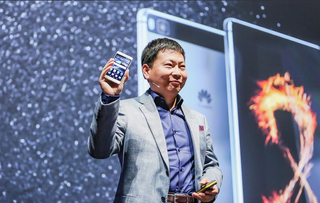
Trailing most of the recent flagship launches such as the Samsung Galaxy S6 and S6 edge and HTC One M9, Huawei announced its own latest high-end handset, the simply-named Huawei P8, as well as a larger variant called the Huawei P8max.
Specifications
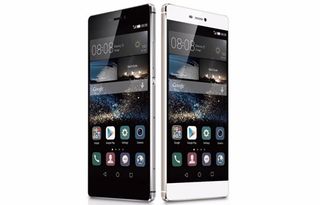
The Huawei P8 comes with a HiSilicon Kirin 930 octa-core CPU that includes a cluster of four Cortex-A53 cores clocked at 2 GHz and another four Cortex-A53 cores clocked at 1.5 GHz. The eight cores seem to be configured as "big.LITTLE" even though all eight of them are Cortex-A53 and not something like Cortex-A53+Cortex-A57, as with the Snapdragon 810.
Huawei decided against using the Snapdragon 810, just like Samsung, and instead went with its own SoC with the belief that the Kirin 930 is a "cooler" chip.

Cortex-A53 cores are meant to be more efficient cores that can be used in lower-end devices with smaller batteries. However, Huawei seems to have taken advantage of the high efficiency of the Cortex-A53 cores to increase the clock speed -- four of them are clocked up to 2 GHz. Although the Cortex-A53 cores usually have lower performance because of a simpler design, the company managed to use their high efficiency to overclock the cores and make them competitive at the high-end.
Huawei also announced that the GPU performance doubled in the Kirin 930 compared to the previous generation Kirin chip inside the P7 flagship. The Kirin 930 SoC uses the Mali-T628MP4 GPU, while its predecessor, the Kirin 910T, used a more mid-range Mali-450MP4 GPU.
The Huawei P8 has a 5.2" screen with a Full HD 1080p resolution that represents 78.3 percent of the total surface of the phone's front, which makes the device appear quite compact. What's even more interesting is that Huawei will offer a special back cover with a built-in 4.3" E-ink screen. The screen is always-on and can be used to read books or view notifications. The secondary E-ink screen idea first emerged on the Russian YotaPhone device.
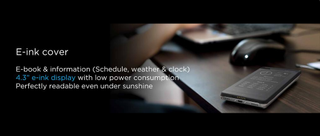
The P8 comes with a 2,600 mAh battery, which seems relatively standard for ultra-slim flagships these days. Huawei even claimed that the combination between this battery size and its efficient processor is "outpacing the market by 20 percent" in terms of battery efficiency. The company said that the P8's battery can last 1.5 days under normal usage, and even a full day under heavy usage.
Stay on the Cutting Edge
Join the experts who read Tom's Hardware for the inside track on enthusiast PC tech news — and have for over 25 years. We'll send breaking news and in-depth reviews of CPUs, GPUs, AI, maker hardware and more straight to your inbox.
Huawei introduced another unique feature in the P8: an app power consumption firewall. The purpose of the firewall is to block all apps that have abnormal power usage. The company said the device should last an extra 2.3 days of standby time thanks to this feature. This seems like something that should make its way into stock Android so all Android users benefit from it.
The Huawei P8 is the slimmest phone in its class, measuring only 6.4 mm. By comparison, the iPhone 6 is 6.9 mm and the Galaxy S6 is 6.8 mm. Unlike the competition, the camera on the back of the P8 is also completely flat, so it's also not cheating in terms of absolute thinness by having a protruding camera.
The device also has 3 GB of RAM and 16 GB of onboard storage, and you can also choose a 64 GB version for a higher price. It will come in silver, gold, black and gray color options.
Huawei P8max
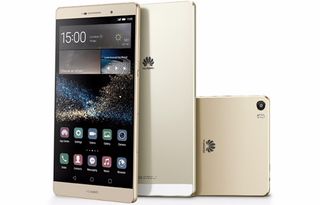
Huawei also announced the P8max, which comes with a slightly more powerful SoC called the Kirin 935. The GPU seems to be the same Mali-T628MP4, but its "higher-end" big.LITTLE cluster is clocked at 2.2 GHz, giving it a 10 percent boost in performance.
The Huawei P8max comes with a much larger 6.8" screen, which also happens to be the largest "in-cell" Full HD display in the world. The device has a screen-to-body ratio of 83 percent, which is among the highest in the industry.
The screen has a contrast ratio of 1500:1, and according to Huawei, that makes it the most vivid display with a color saturation of 95.6 percent (presumably on the sRGB scale). In comparison, the iPhone 6 has a color saturation of only 69.5 percent. The screen is also optimized to look clearer in direct sunlight thanks to its "Sun View" mode. The screen is covered by the latest and much more durable Gorilla Glass 4, as well as a spill-resistant nano-coating.
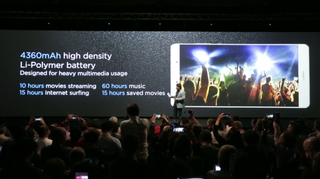
While its smaller brother, the P8, only has a 2,600 mAh battery, the P8max has a much larger 4,360 mAh battery. This translates to 2.23 days of normal usage and 1.4 days of heavy usage, according to Huawei.
The P8max is slightly thicker than the P8, but it's the same thickness as the Galaxy S 6 at only 6.8 mm. Its direct competitors, the iPhone 6 Plus and the Galaxy Note 4, have thicknesses of 7.1 mm and 8.5 mm, respectively.
The P8max has 94 percent (aluminum alloy) metal in its body, which seems to be a dig at competitors such as Samsung that have metal in their devices but also make use of plastic.
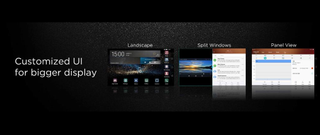
One extra feature that the P8max has that the P8 doesn't is a split screen mode wherein you can use two apps at the same time. This feature works better on larger devices such as the 6.8" P8max, which is likely why Huawei didn't enable it on the P8. The feature is similar to what Samsung has been doing with its Note-series devices, but it only works when the device is horizontal.
The Camera And Its Exciting "Director Mode"
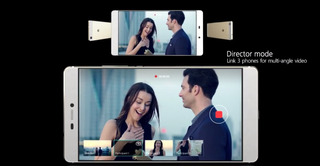
Huawei spent a great deal of time at its live press event talking about the P8's camera, and assuming that the company's claims regarding performance are accurate, it's easy to see why. The 13MP camera itself is flush against the body of the phone and features OIS and a "DSLR-level" independent ISP from Altek, and it features 4-color RGBW imaging for brighter images in high-contrast conditions, and far less noise in low-light situations.
Huawei claimed that the P8's OIS is essentially twice as good as the iPhone 6's (1.2 degrees versus 0.6 degrees). The ISP should also aid in image noise reduction, and it offers scene recognition, face detection, and optimization technology, as well the promise of better exposure, white balance and more natural-looking colors.
In the auto scene recognition feature, the camera apparently shoots four simultaneous frames at different exposures and layers them together, allowing the software to generate the best possible composite exposure.
There's also a light painting function, where you can capture a subject tracing light (such as someone waving a flashlight to write their name in the air), as well as the ability to get an instant and accurate preview of the image you're shooting.
That's all well and good, but possibly the most interesting feature of the P8's camera is the ability to link several smartphones and shoot simultaneous video from multiple angles with "Director Mode." You can link up to four total smartphones and shoot the same subject from the four different angles, and you can apparently edit the video and choose various angles at different points in the video on the fly.
At least one of the smartphones has to be a Huawei P8; Huawei was not clear about what other smartphones support the feature.
This is an amazing feature for guerrilla video makers, and it plays directly into YouTube's (presumably upcoming) Choose Your View multi-angle experience. With Director Mode and Choose Your View, anyone with a few smartphone-wielding pals can shoot a video and provide viewers with multiple viewing options.
Other Features
It appears that Huawei really focused on solving common smartphone problems and user experience issues with the P8 rather than just throwing in the highest-performing available components, and for that the company deserves laud.
It also seems to be taking aim specifically at Apple's iPhone 6, as opposed to the whole of the flagship smartphone market. The P8 is a true attempt at an "iPhone killer."
Antennas And Connectivity
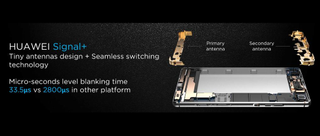
Huawei put two antennas in the P8 to avoid any issues with signal blockage due to hand placement. (You may recall that Apple had a problem with this in the iPhone 4.) The P8 intelligently switches the signal depending on where your hand is located, and it claims to accomplish the handoff remarkably faster than any other device. It also claims that users will experience half as many dropped calls and a 20 percent increased call connection rate over competitive handsets.
Huawei touted its Huawei Wi-Fi+ feature that's designed to automatically connect your P8 to the best available Wi-Fi network. It automatically switches depending on where you are -- such as your living room or at work -- and it also appears to intelligently switch to a 3G or 4G network when needed.
When you're roaming, the Huawei Roaming+ feature is designed to ensure that, for example, when you land in a new country and fire up the phone, you'll experience a 3x faster connection to the network.
Speaking of roaming, although the P8 comes in a single-SIM variant, there's also a dual-SIM model that supports two 4G LTE SIMs. The P8 has two nano SIM slots, although one of the two can also handle a Micro SD card. Huawei said that you can "easily configure" the dual-SIM setup "in seconds."
There are less notable but certainly welcome features, too, such as the Smart International Dialer. Simply put, this feature lets you call numbers in other countries without having to remember the country codes.
Call Quality, Audio And Voice Commands

Huawei also focused on call quality. (How about that?) The company promised a 58 percent bump in volume over the competition with "loud voice mode," and with its "super hands-free mode" (aka "speaker mode"), the P8's high-sensitivity mic and dynamic range speaker will provide "crystal clear" performance for, for example, conference calls.
Huawei accomplished the better hands-free experience using its audio DSP processor, a smart power amplifier (PA), and a single-box speaker chamber that is tiny but can apparently significantly boost volume. (This is also ideal for playing music.) Huawei stated that the speaker mode experience will be ideal for anyone sitting within two meters of the device.
The P8 is designed to cut down on ambient noise and wind, too. The DSP in tandem with an algorithm promises a 90 percent reduction in wind noise when you're using a single-mic headset. Huawei offered a demo -- a recording of a caller chatting in a windy environment. With the wind noise reduction applied, the difference in noise was remarkable.
Unlocking a device can be a minute but grating chore, but you can unlock the P8 using Huawei's TalkBand B2 (or, Huawei said, "any Bluetooth device," although it's quite unclear what that means exactly).
One of the most attractive new features pertaining to voice and audio is the ability to find your P8 in a room just by calling for it. We've all been there -- having to ask a friend or spouse to call your phone so you can locate it in the car, or living room, or wherever. With the P8, you can simply speak, "Hi buddy," (or whatever your preset command is), "Where are you?" The handset will eerily reply, "I'm here" and play music to guide you to its location. Your voice command will wake it up even if it's sleeping; this state is very low power and thus shouldn't drain the battery.
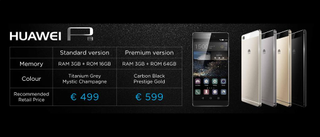
The Huawei P8 "Standard" with 16 GB of storage will arrive in Titanium Grey and Mystic Champagne and cost 499 euro, while the "Premium" model with 64 GB of storage will come in Carbon Black and Prestige Gold and cost 599 euro.

The Huawei P8max "Standard" with 32 GB of storage will cost 549 euro and arrive in Titanium Grey and Mystic Champagne, while the Premium model with 64 GB of storage will cost 649 euro and come in Titanium Grey and Prestige Gold.
The two devices will soon be available, initially in more than 30 countries including China, Columbia, France, Germany, Mexico, Spain, South Africa, Turkey, UAE and the United Kingdom, with a global (100 countries) rollout a month later.
Follow us @tomshardware, on Facebook and on Google+.
-
CaedenV Neat phone, but after seeing that e-ink display cover all that I want now is a wallet case for my phone that has an e-ink display on the outside. Surely someone can make this a thing!Reply -
drapacioli Okay, an e-ink cover sounds like a cool and practical thing, but I would imagine the wireless tech put into the secondary wireless display would diminish the potential battery gains as opposed to just using the regular screen?Reply -
alextheblue ReplyOkay, an e-ink cover sounds like a cool and practical thing, but I would imagine the wireless tech put into the secondary wireless display would diminish the potential battery gains as opposed to just using the regular screen?
It's on the back cover (optional). Who says it's wireless?? Also, it's e-ink! That means it only uses power when it updates the image it is displaying. When the image is static, it uses no power. So as long as they're not tracking the exact time, it will only update every few minutes at most, and whenever you receive a new notification. Even then it uses substantially less power than waking the primary display, so it could actually provide a net power savings. -
Antias Hmmm, i use my Note 3 for reading (a LOT) and this makes me wonder if i could use the e-ink back cover for reading my books, especially on the larger size?Reply -
wtfxxxgp ReplyAm I the only one here? this device seems too good to be true?
Gosh, you read my mind. I was reading through this and thinking exactly that. It sounds, in theory, like an amazing phone. I missed out on whether the battery is removable or not though? -
Anas Bashar Reply15688229 said:Am I the only one here? this device seems too good to be true?
Gosh, you read my mind. I was reading through this and thinking exactly that. It sounds, in theory, like an amazing phone. I missed out on whether the battery is removable or not though?
I am about to buy a phone these days, and the thing that worries me is the hardware quality here.
Most Popular




